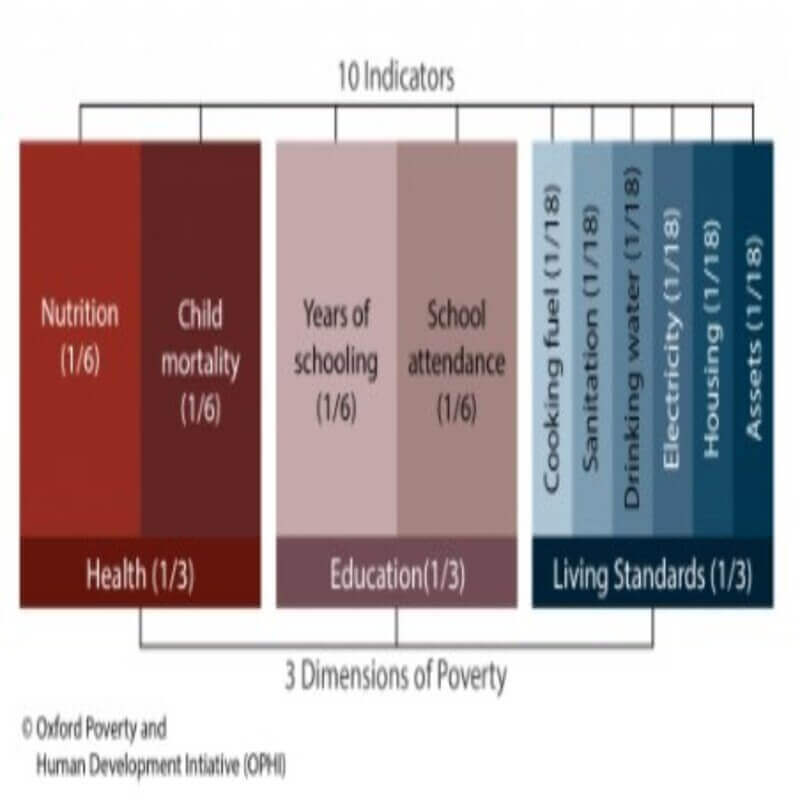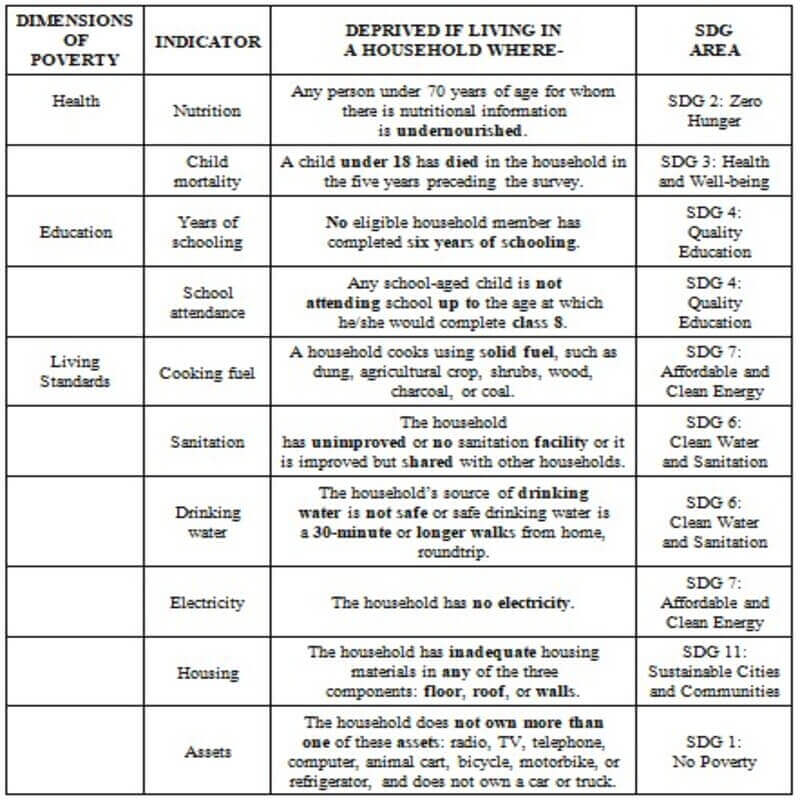
The global Multidimensional Poverty Index (MPI) is an annual report of poverty measures. Read here to know more about it.
The global Multidimensional Poverty Index (MPI) is an international measure of acute multidimensional poverty covering over 100 developing countries.
It complements traditional monetary poverty measures by capturing the acute deprivations in health, education, and living standards that a person faces simultaneously.
- It is based on the idea that poverty is not unidimensional- it does not depend on income only as one individual may lack several basic needs like education, health, etc- rather it is multidimensional.
The global MPI was developed by Oxford Poverty and Human Development Initiative (OPHI) with the UN Development Programme (UNDP) for inclusion in UNDP’s flagship Human Development Report in 2010. It has been published annually by OPHI and in the HDRs ever since.
What does the Multi-Dimensional Poverty Index (MPI) measure?
The global MPI shows who is poor and how they are poor and can be used to create a comprehensive picture of people living in poverty.
It permits comparisons both across countries and world regions, and within countries by ethnic group, urban/rural area, sub-national region, and age group, as well as other key household and community characteristics. For each group and country as a whole, the composition of MPI by each of the 10 indicators shows how people are poor.
This makes the MPI and its linked information platform invaluable as an analytical tool to identify the most vulnerable people – the poorest among the poor, revealing poverty patterns within countries and over time, enabling policymakers to target resources and design policies more effectively.
How is the Multi-Dimensional Poverty Index (MPI) measured?

The MPI assesses poverty at the individual level. If a person is deprived in a third or more of ten (weighted) indicators, the global MPI identifies them as ‘MPI poor’. The extent or intensity of their poverty is also measured through the percentage of deprivations they are experiencing.
The global multidimensional poverty index uses three dimensions and ten indicators as described below. These dimensions and indications cover the sustainable development goals as well.

What is global data for 2021?
- 3 billion people are multidimensionally poor.
- About half (644 million) are children under the age of 18.
- Nearly 85% live in Sub-Saharan Africa (556 million) or south Asia (532 million).
- Worldwide about 2/3rd of multidimensionally poor people live in households where no woman or girl completed at least six years of schooling.
- The report finds that women and girls living in multidimensional poverty are at higher risk of intimate partner violence.
- 1 billion are exposed to solid fuel cooking fuels, another billion live with inadequate sanitation and another billion have substandard housing.
- 788 million live in a household with at least one undernourished person.
- 568 million lack improved drinking water within a 30-minute walk distance.
India’s status
The multidimensional P0verty Index presents the incidence and intensity of multidimensional poverty among the castes and tribes and among individuals who are not members of any caste or tribe.
- 5 out of 6 multidimensionally poor people are from lower tribes or castes.
- 4%of the schedule tribe group lives in multidimensional poverty.
- 3%of the scheduled caste group live in multidimensional poverty.
- 2%of the other backward caste group lives in multidimensional poverty.
- Close to 12% of the population live in female-headed households.
- 227 million multidimensionally poor people have less than 6 years of schooling.
The CoVID-19 pandemic has eroded development progress around the world, and we are still grappling to understand its full impacts. It has exposed the weaknesses in social protection systems, education, and workers’ vulnerability around the world. These weaknesses are deepest in countries with higher levels of multidimensional poverty.
Previous year Question:
“The incidence and intensity of poverty are more important in determining poverty based on income alone.” In this context analyze the latest United Nations Multidimensional Poverty Index Report. (250 words, 15 marks) (UPSC Mains GS II 2020)






Leave a Reply